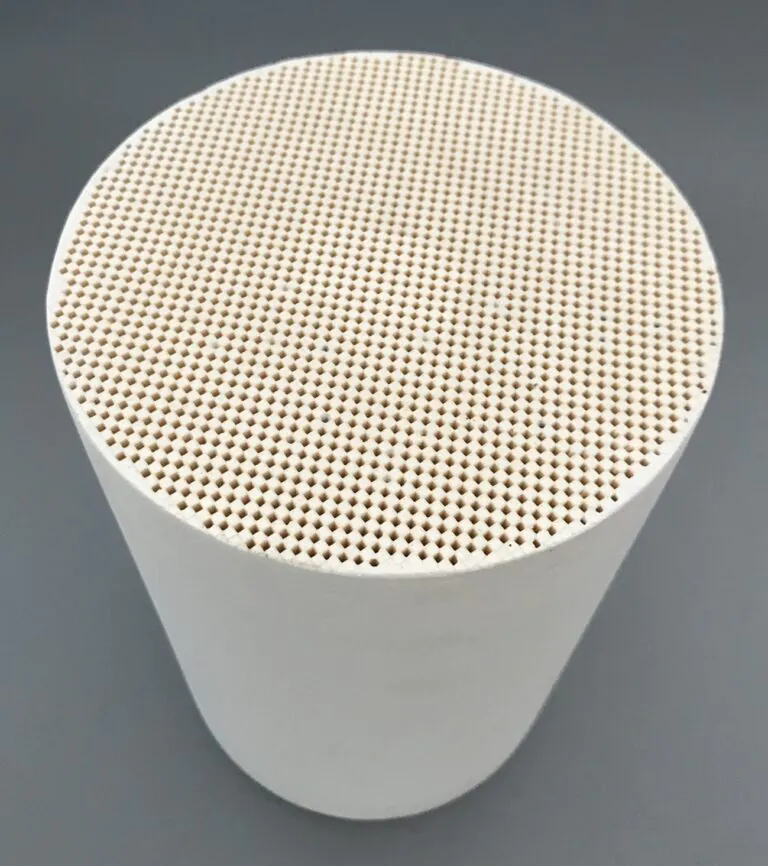Diesel engines require effective solutions to meet global emissions standards. The diesel engine particulate filter (DPF) captures over 95% of harmful soot and ash from exhaust streams. Hualian Catalyst specializes in Sic/Cordierite DPFs engineered with wall-flow honeycomb technology, balancing high particulate capture with minimal backpressure. These filters enable compliance with Euro IV–VI regulations while preserving engine efficiency and power output.
Cordierite DPF: Cost-Effective Urban Performance
Hualian Catalyst’s Cordierite diesel engine particulate filter offers lightweight construction and exceptional thermal shock resistance. This makes it ideal for light-duty vehicles operating in stop-and-go urban environments. Its low-cost structure reduces operational expenses without compromising on durability or emission reduction capabilities.
Silicon Carbide (SiC) DPF: Heavy-Duty Reliability
For extreme conditions in mining, construction, or long-haul transport, Hualian Catalyst’s SiC aftertreatment diesel particulate filter delivers unmatched robustness. Its superior thermal conductivity and mechanical strength prevent cracking during regeneration cycles. This aftertreatment diesel particulate filter withstands sustained high temperatures and vibrations, ensuring extended service life for heavy-duty engines.
Optimized Backpressure Management
Both Cordierite and SiC diesel engine particulate filters from Hualian Catalyst maintain critically low exhaust backpressure. The Cordierite variant enhances fuel efficiency in dynamic driving cycles, while the SiC aftertreatment diesel particulate filter excels in continuous high-load operations. This precision engineering prevents power loss and supports consistent engine performance.
Conclusion
Hualian Catalyst provides tailored DPF systems for diverse operational needs. The Cordierite filter delivers economical compliance for urban fleets; the SiC diesel engine particulate filter ensures long-term reliability in abrasive environments. Partner with Hualian Catalyst to achieve sustainable emissions control, reduce regulatory risks, and optimize total cost of ownership.


